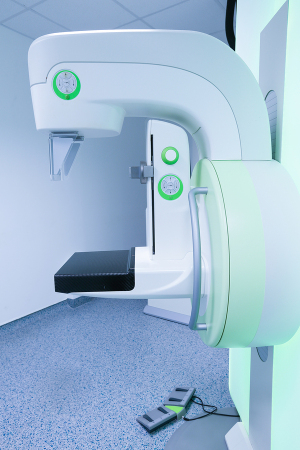Weighing tomosynthesis against ultrasound for secondary dense breast imaging: study
por
Lauren Dubinsky, Senior Reporter | March 09, 2016

Mammography system
It’s well known that mammography is not always the best screening tool for women with dense breasts, but it’s not clear which modality should be used for additional screening. The Adjunct Screening with Tomosynthesis or Ultrasound in Mammography-negative Dense breasts (ASTOUND) trial found that tomosynthesis and ultrasound may be good options.
Asymptomatic women with BI-RAD scores of 3 or 4 — indicating heterogeneously or extremely dense breasts — were recruited for the trial after undergoing breast screening at one of five imaging centers in Italy. In total, the researchers evaluated data from 3,231 women with dense breasts for whom mammograms did not detect any cancer.
They found that tomosynthesis and ultrasound scans picked up 24 cancers that were missed by mammography. Both tomosynthesis and ultrasound detected 12 of those cancers, but one was detected by tomosynthesis alone and 11 were detected by ultrasound alone.
Although the researchers found that ultrasound was able to detect more cancers than tomosynthesis, they also noted significant drawbacks to the modality.
Ultrasound can be a time consuming exam and is frequently conducted by less-experienced staff members. It also returned significantly more false positives than tomosynthesis — an exam which can be conducted as part of the 2-D mammography exam or instead of it.
Since tomosynthesis detected over 50 percent of the additional breast cancers in the study, the researchers think that it has the potential to be the primary mammography screening tool without the need for any additional screening procedures.
In their report, the researchers said that more work should be done to investigate tomosynthesis and ultrasound in other settings, as well as cost analysis studies, before definitive recommendations can be made.
Notably, the findings will have dissimilar implications in different countries. In the U.K. and Australia, additional screening tests for dense breasts is not recommended, but in the U.S. — where laws require providers to inform women about their breast density and the availability of extra tests — the findings may be of particular interest.
Taking into account the additional false positives, it is not yet known whether adjunct screening improves screening efficacy and provides benefits beyond standard mammography. Organized screening programs will most likely want that evidence before making any changes.
This study doesn’t provide all the evidence for that issue, but it does give the first clinical piece of information on how the two modalities compare, according to Nehmat Houssami, professor of public health at the University of Sydney, Australia. If a patient is concerned because their breasts are very dense, the physician can use the data from the ASTOUND trial to discuss the options of having additional tomosynthesis or ultrasound screening.
"I would discuss with [my patient] the pros and cons of adding another test to improve sensitivity for detecting cancer, but would also point out this could have additional harms such as more false alarms," said Houssami, who represented the Italian-based trial at the 10th European Breast Cancer Conference (EBCC-10) where the research was presented.
|
|
|
You Must Be Logged In To Post A Comment
|
